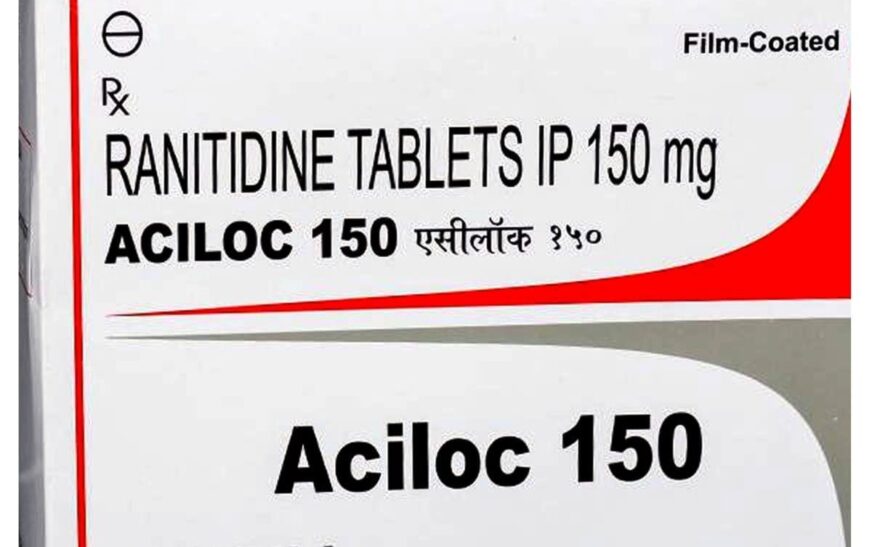Aciloc, a brand name for Ranitidine 150 mg, is a widely used medication primarily prescribed for reducing stomach acid. It belongs to a class of drugs called H2 receptor blockers, which work by decreasing the production of stomach acid, offering relief from conditions like acid reflux, peptic ulcers, and heartburn. Like any medication, Aciloc can have both beneficial effects and potential side effects on the body. This blog explores the uses, effects, and precautions associated with Aciloc tablets.
How Aciloc Works in the Body
Aciloc works by blocking H2 receptors in the stomach lining. These receptors are responsible for signaling the stomach to produce acid. By inhibiting these signals, Aciloc:
- Reduces Acid Production: Helps prevent excessive stomach acid, which can irritate the lining of the stomach and esophagus.
- Promotes Healing: Allows ulcers and other damage caused by acid to heal.
- Relieves Symptoms: Reduces symptoms like heartburn, indigestion, and bloating associated with high stomach acid levels.
Medical Uses of Aciloc Tablets
Aciloc is commonly prescribed for several conditions, including:
- Acid Reflux (GERD)
- Helps manage gastroesophageal reflux disease by reducing acid that flows back into the esophagus, alleviating symptoms like heartburn and regurgitation.
- Peptic Ulcers
- Aids in healing ulcers in the stomach or duodenum by minimizing acid exposure to the ulcerated areas.
- Zollinger-Ellison Syndrome
- Treats this rare condition characterized by excessive acid production due to gastrin-secreting tumors.
- Heartburn and Indigestion
- Provides relief from occasional or chronic heartburn and indigestion caused by overproduction of stomach acid.
- Prevention of Acid-Related Damage
- Used prophylactically in patients at risk of developing ulcers due to prolonged use of NSAIDs or other medications that can irritate the stomach lining.
Beneficial Effects of Aciloc
When taken as prescribed, Aciloc provides significant benefits:
- Symptom Relief: Offers quick and effective relief from burning sensations, bloating, and discomfort.
- Improved Quality of Life: Allows patients to enjoy meals and daily activities without fear of discomfort or reflux.
- Supports Healing: Reduces acid-related damage, promoting faster recovery in conditions like ulcers or esophagitis.
- Preventive Use: Prevents recurrence of acid-related conditions in at-risk individuals.
Possible Side Effects of Aciloc
Like all medications, Aciloc may cause side effects in some people. Most are mild and temporary, but certain effects warrant medical attention.
Common Side Effects
- Headache
- Dizziness
- Diarrhea or Constipation
- Nausea or Vomiting
- Fatigue
Rare but Serious Side Effects
- Allergic Reactions: Symptoms include rash, itching, swelling, or difficulty breathing.
- Liver Issues: Rarely, ranitidine can cause liver problems, indicated by yellowing of the skin or eyes (jaundice).
- Heart Rhythm Changes: Can cause irregular heartbeats, especially in individuals with pre-existing conditions.
- Reduced Absorption of Nutrients: Prolonged use may interfere with the absorption of certain vitamins (e.g., vitamin B12) and minerals.
Long-Term Use Concerns
Long-term use of acid-suppressing medications like Aciloc has been associated with:
- Increased risk of infections such as pneumonia and gastrointestinal infections (due to reduced stomach acid).
- Bone health issues, such as low stomach acid may impair calcium absorption.
Precautions When Using Aciloc
When to Avoid Aciloc
- Allergic Reaction: Avoid if you’ve had an allergic reaction to ranitidine or similar medications.
- Renal Impairment: Use with caution if you have kidney problems, as the drug is eliminated through the kidneys.
- Pregnancy and Breastfeeding: Consult a doctor before use to ensure safety for you and your baby.
Drug Interactions
Aciloc can interact with other medications, such as:
- Antifungal Drugs: May reduce the effectiveness of certain antifungals like ketoconazole.
- Blood Thinners: Could affect how medications like warfarin work, increasing the risk of bleeding.
- Antacids: Combining with other acid-reducing agents may reduce the drug’s effectiveness.
Dosage and Administration
- Take Aciloc as prescribed, usually 1–2 times daily.
- It’s best taken 30–60 minutes before meals or at bedtime for optimal effect.
- Avoid alcohol, smoking, and spicy foods, as they can worsen acid-related symptoms.
Addressing Concerns About Ranitidine Safety
In recent years, concerns have arisen regarding ranitidine’s safety due to impurities (NDMA) found in some formulations. This led to recalls and the discontinuation of ranitidine in many countries. It’s important to:
- Consult Your Doctor: Discuss alternative medications if you’re concerned about ranitidine.
- Follow Local Guidelines: Ensure the Aciloc you’re using meets current safety standards.
Alternatives to Aciloc
If Aciloc is not suitable for you, other medications may be considered:
- Proton Pump Inhibitors (PPIs): Omeprazole, pantoprazole, or esomeprazole provide stronger acid suppression.
- Other H2 Blockers: Famotidine or cimetidine may be alternatives.
- Lifestyle Modifications: Eating smaller meals, avoiding trigger foods, and maintaining a healthy weight can also help manage acid-related conditions.
Conclusion
Aciloc (ranitidine) is a valuable medication for managing conditions related to excess stomach acid, offering relief and promoting healing. While it provides significant benefits, it’s essential to use it responsibly and under medical supervision to minimize potential side effects or risks.






